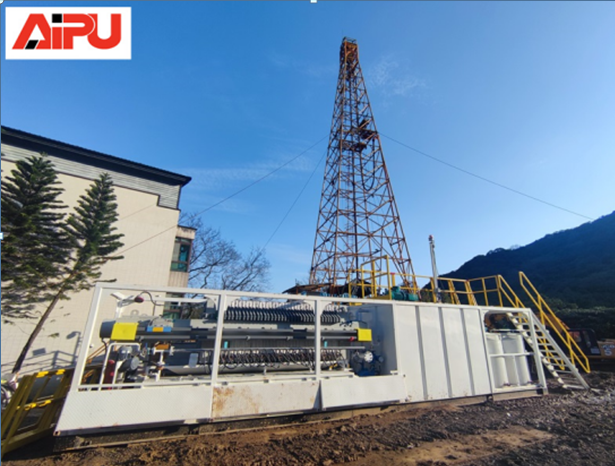Revolutionizing Drilling Efficiency with High - tech Equipment
In the dynamic realm of drilling technology, solids control equipment has emerged as a cornerstone of innovation, setting new trends that are revolutionizing the industry. As drilling operations become more complex and environmentally conscious, the demand for advanced solids control solutions has never been higher.
The Evolution of Solids Control Equipment
Solids control equipment has come a long way since its inception. Initially, basic equipment was used to separate large solids from the drilling fluid. Over time, technological advancements have led to the development of more sophisticated systems. Modern solids control equipment can efficiently remove fine particles, ensuring the quality of the drilling fluid. This evolution has been driven by the need for improved drilling performance, reduced costs, and enhanced environmental protection.
Key Components and Their Functions
There are several key components in solids control equipment. The shale shaker is the first line of defense, separating large cuttings from the drilling fluid. It uses vibrating screens to sieve out the solids. The desander and desilter, on the other hand, are used to remove smaller particles. They work based on the principle of hydrocyclones, which use centrifugal force to separate the solids from the fluid. The decanter centrifuge is another crucial component. It can separate extremely fine solids and is often used for final polishing of the drilling fluid.
New Trends in Solids Control Technology
One of the significant trends in solids control technology is the integration of automation. Automated systems can monitor and adjust the operation of solids control equipment in real - time, improving efficiency and reducing the need for manual intervention. Another trend is the development of environmentally friendly equipment. With increasing environmental regulations, manufacturers are focusing on creating equipment that minimizes waste and reduces the use of harmful chemicals. Additionally, the use of advanced materials in the construction of solids control equipment is on the rise. These materials offer better durability and corrosion resistance, extending the lifespan of the equipment.
The Impact on Drilling Operations
The advancements in solids control equipment have had a profound impact on drilling operations. By ensuring the quality of the drilling fluid, it reduces wear and tear on drilling equipment, leading to longer equipment life and lower maintenance costs. It also improves the efficiency of the drilling process, as a clean drilling fluid allows for better penetration rates. Moreover, the environmental benefits of modern solids control equipment cannot be overstated. By reducing waste and minimizing the release of harmful substances, it helps drilling companies meet regulatory requirements and maintain a positive environmental footprint.
In conclusion, solids control equipment is at the forefront of setting new trends in drilling technology. Its continuous evolution and innovation are driving the industry towards greater efficiency, sustainability, and performance.

The Evolution of Solids Control Equipment
Solids control equipment has come a long way since its inception. Initially, basic equipment was used to separate large solids from the drilling fluid. Over time, technological advancements have led to the development of more sophisticated systems. Modern solids control equipment can efficiently remove fine particles, ensuring the quality of the drilling fluid. This evolution has been driven by the need for improved drilling performance, reduced costs, and enhanced environmental protection.
Key Components and Their Functions
There are several key components in solids control equipment. The shale shaker is the first line of defense, separating large cuttings from the drilling fluid. It uses vibrating screens to sieve out the solids. The desander and desilter, on the other hand, are used to remove smaller particles. They work based on the principle of hydrocyclones, which use centrifugal force to separate the solids from the fluid. The decanter centrifuge is another crucial component. It can separate extremely fine solids and is often used for final polishing of the drilling fluid.
New Trends in Solids Control Technology
One of the significant trends in solids control technology is the integration of automation. Automated systems can monitor and adjust the operation of solids control equipment in real - time, improving efficiency and reducing the need for manual intervention. Another trend is the development of environmentally friendly equipment. With increasing environmental regulations, manufacturers are focusing on creating equipment that minimizes waste and reduces the use of harmful chemicals. Additionally, the use of advanced materials in the construction of solids control equipment is on the rise. These materials offer better durability and corrosion resistance, extending the lifespan of the equipment.
The Impact on Drilling Operations
The advancements in solids control equipment have had a profound impact on drilling operations. By ensuring the quality of the drilling fluid, it reduces wear and tear on drilling equipment, leading to longer equipment life and lower maintenance costs. It also improves the efficiency of the drilling process, as a clean drilling fluid allows for better penetration rates. Moreover, the environmental benefits of modern solids control equipment cannot be overstated. By reducing waste and minimizing the release of harmful substances, it helps drilling companies meet regulatory requirements and maintain a positive environmental footprint.
In conclusion, solids control equipment is at the forefront of setting new trends in drilling technology. Its continuous evolution and innovation are driving the industry towards greater efficiency, sustainability, and performance.








